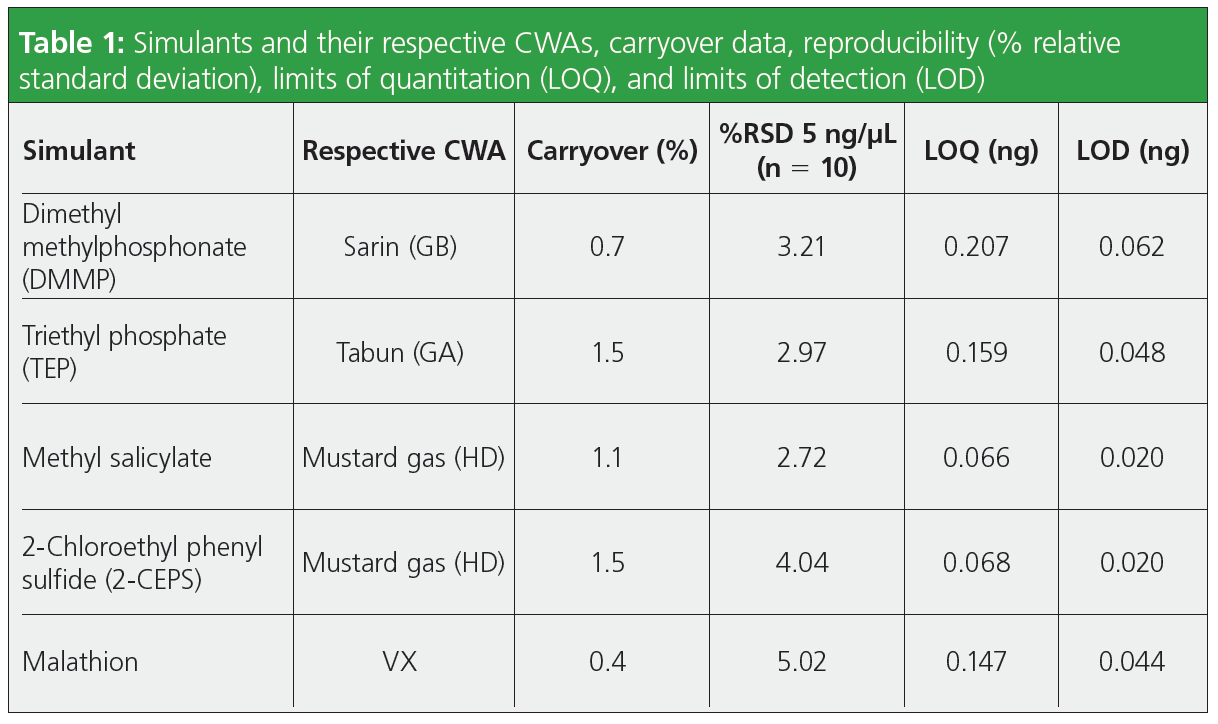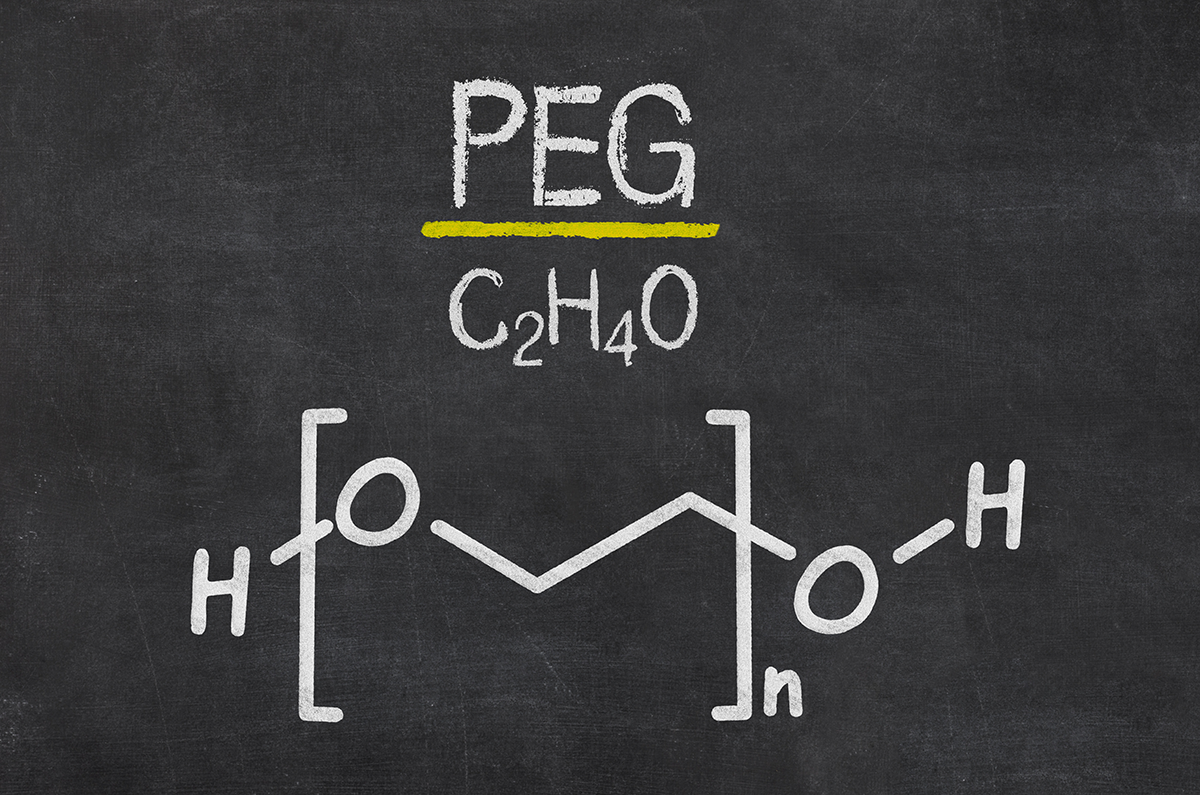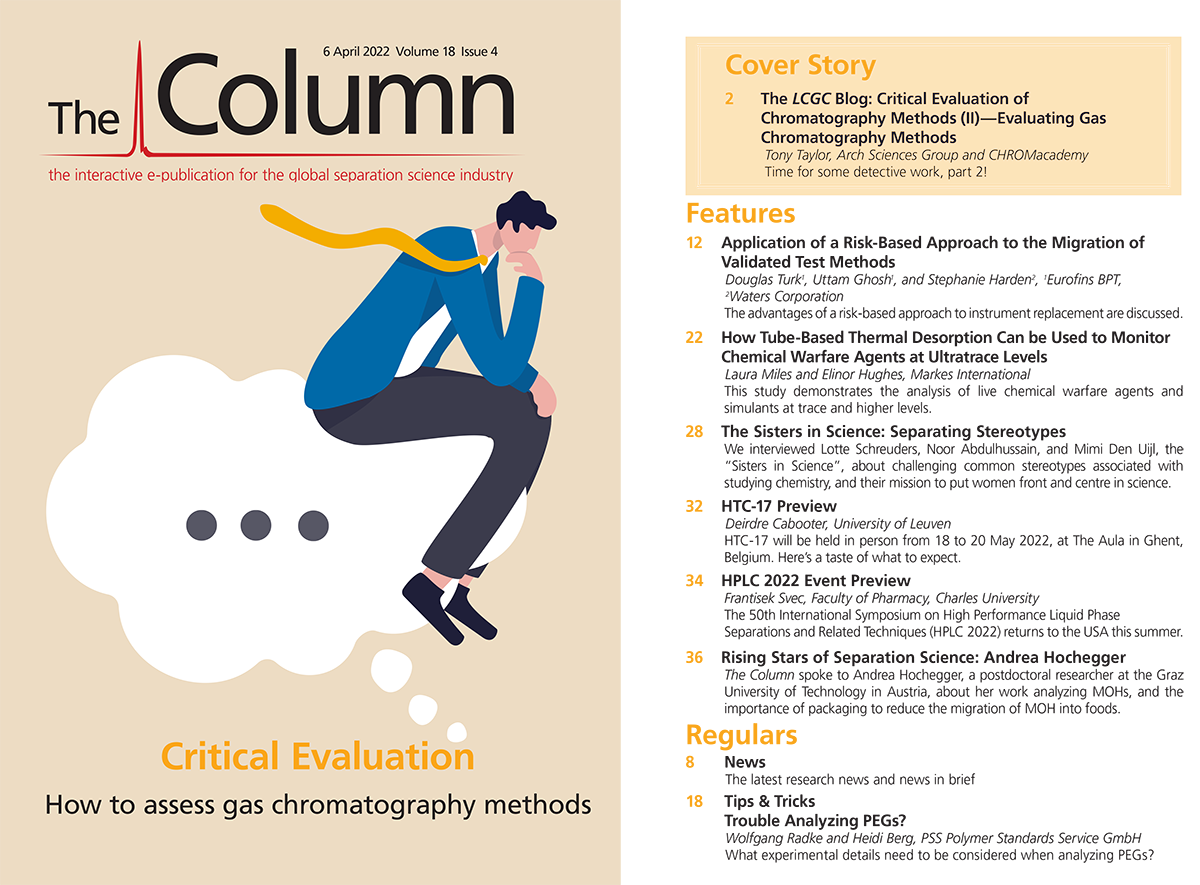How Tube-Based Thermal Desorption Can be Used to Monitor Chemical Warfare Agents at Ultratrace Levels
Chemical warfare agents (CWAs) and their respective simulants were analyzed using standard tubes and depot area air monitoring systems (DAAMS) tubes. The tubes were desorbed using standard- or DAAMS‑configured automated thermal desorbers, respectively, and analysis was performed using gas chromatography–mass spectrometry (GC–MS) or GC–MS–flame photometric detection (FPD). Two recent TD innovations were evaluated—enhanced internal standard addition and multi-tube trap stacking—for monitoring CWAs at ultratrace levels.
Many chemical warfare agents (CWAs) are volatile or semivolatile organic compounds (VOCs/SVOCs) compatible with gas chromatography (GC) analysis; for example the nerve agents VX, sarin (GB), cyclosarin (GF), soman (GD), and Russian VX (R-VX), the blister agent mustard gas, and the tear gases chlorobenzylidenemalononitrile (CS) and chloropicrin (PS). Trace-level monitoring of CWAs is required for many military and civilian scenarios, for example, when monitoring agent storage facilities and neighbouring locations; monitoring agent destruction facilities to ensure the safety of site personnel; remediation and decontamination; continuous monitoring of critical government buildings; mobile laboratories that can be deployed in the event of a chemical incident; or in defence research, such as testing the efficacy of equipment assigned to protect soldiers on the battlefield.
The extreme toxicity of CWAs means that simulants are generally used during research to minimize the risk to scientists. The simulants used in this study (Table 1) behave like their respective agents during GC analysis. Many CWAs and their simulants are sticky and/or reactive species that present a significant analytical challenge, especially at sub-nanogram and picogram levels.

Both online systems (generating semi‑continuous near real-time measurement) and offline laboratory‑based installations may be deployed in conventional or mobile laboratories. The most widely used sampling options include pumped monitoring onto sorbent tubes and round‑the-clock online air monitoring and analysis.
Experimental
Standards: The simulants used in the first phase of the study were selected following the recommendations of Bartelt-Huntet al. (1) (Table 1). A stock solution was produced using high-purity standards of the compounds at 100 ng/µL in methanol. The stock solution was diluted in methanol as required to produce lower-level standards. Aliquots of 1 µL of the standard solutions were then introduced onto the sampling end of preconditioned sorbent tubes in a flow of carrier gas using a calibration solution loading rig. The solvent was allowed to purge off the tube before the standards were sealed for analysis.
Experimental Conditions: Thermal desorption (TD): Instrument: Unity–Ultra‑xr (standard- and DAAMS-configured; Markes International); tubes: inert-coated stainless steel, DAAMS 4.5” × 6 mm outside diameter (o.d.), quartz wool/tenax TA (part no. C2-VBXX-7011; Markes International), and standard 3.5-inch × 6.4 mm o.d. tubes (part no. C1-CAXX-5003; Markes International); flow path: 200 °C; dry purge: 1 min at 50 mL/min; tube desorption: 300 °C (8 min) at 50 mL/min, splitless; sample flow: 50 mL/min; internal standard addition: to tube; trap purge: 1.0 min at 50 mL/min; focusing trap: “Chemical weapons” trap (part no. U-T10CW-2S; Markes International); focusing trap low: 20 °C; focusing trap high: 300 °C (3 min); trap heat rate: max; outlet split: splitless or 9 mL/min for re-collection tests; GC column: 30 m × 0.25 mm, 0.25-μm BPX5 (Trajan Scientific and Medical); carrier gas: helium; column flow: 2 mL/min, constant flow; oven: 40 °C, 20 °C/min to 300 °C (4 min); MS source: 250 °C; transfer line: 310 °C; quadrupole: 200 °C; scan range: m/z 35–350.
Results and Discussion
Excellent peak shape was achieved for all compounds, even for dimethyl methylphosphonate (DMMP), which frequently exhibited tailing during capillary GC analysis (Figure 1) (2).

Linearities: Calibrations were performed over eight levels between 100 pg and 100 ng using 1-µL injections of the standard solutions. Note that while low ng and pg levels are more representative of the levels collected during air monitoring, 100-ng levels were seen in some important chamber tests. The linearities for all five compounds were excellent across this extended dynamic range, with R2 ≥ 0.9991.
Carryover: Carryover in the tube and system was assessed by loading tubes with a 100‑ng standard and desorbing them twice. A maximum carryover of 1.5% was achieved, even at these extremely high levels (Table 1).
Reproducibility: Reproducibility was tested at low and high concentrations to verify method parameters. The relative standard deviation (%) can be seen in Table 1 for 5 ng/µL. Values for all compounds at all levels were around or below 5%.
Internal Standard: Internal standards reduce analytical uncertainty by identifying variability between injections that may otherwise have gone unnoticed, for example, variable detector response. Gas‑phase internal standards can be introduced automatically to the sampling end of sorbent tubes at two different stages: pre-loading sorbent tubes prior to transport and sampling, and immediately before tube desorption.
Deuterated compounds are commonly used as internal standards. In this study, the sorbent tubes were pre-loaded with benzene-d6 before introducing the simulant standards. During real-world field studies, some sampling discrepancies and anything that compromises tube seals during storage and transport (before and after tube sampling) will impact the level of pre-loaded internal standard. This will then be observed by a deviation in internal standard levels for the affected sample tube. Likewise, if the pre-loaded internal standard value in a tube matches others in the batch while levels of all other analytes on that tube are significantly lower than other samples in the batch, this might indicate pump failure and the collection of smaller than expected air volumes during sampling.
The addition of an internal standard during automated TD serves as a quality control check of the system itself. Toluene-d8 was used in this study. Results were plotted over time to verify the system’s performance, to show any outliers, and to check detector response and peak shape. Reproducibility in this study was found to be 1.1% for toluene-d8. Both pre-sampling and analytical internal standards can be used in the same study provided that different internal standard compounds are selected for each.
A test was carried out on four tube replicates of the 100-ng/µL standard containing both internal standards. The resulting chromatograms showed a peak at 1.9 min for benzene-d6 and a peak at 2.4 min for toluene-d8. In one chromatogram, the benzene-d6 peak was missing and the early‑eluting target compounds (between 2.5 and 4 min) were lower than expected. However, the presence of toluene-d8 at expected levels showed that the system was working correctly. A close‑up comparison of the failed standard with a successful standard showed this more clearly. The most likely reason is breakthrough (loss of volatiles), probably caused by passing too large a volume of air through the tube during sampling or standard loading. If this had happened during field sampling without a pre-loaded internal standard, erroneously low results could have been reported for the more volatile compounds.
Improving Detection Limits—Reaching Trace Levels More Easily
The very high toxicity of chemical agents means detection was required at extremely low levels, necessitating the concentration of large volumes of air using pumped sorbent tubes before analysis. Calculations were performed to determine the limit of quantitation (LOQ, calculated using a signal‑to-noise ratio of 10) and limit of detection (LOD, calculated by using a signal‑to-noise ratio of three) from the linearity data (Table 1).
Some TD systems offer users the option to “stack” the desorptions of two or more samples on the same focusing trap. This is useful where air volumes are limited by sampling time or analyte breakthrough, and it requires multiple samples to be collected in parallel at the monitoring location.
To test the efficacy of trap stacking, a trace‑level standard was produced (0.005 ng/µL) and four clean and conditioned sorbent tubes were spiked with 1 µL each. One of the tubes was analyzed using the regular analytical method and the remaining three tubes were analyzed by stacking the desorbed vapour from all three tubes onto the focusing trap before trap desorption under normal conditions. 2-Chloroethyl phenyl sulfide (2-CEPS) was detected in both chromatograms at a good resolution and peak shape at 7 min. However, DMMP exhibited a poor response and was difficult to see in the single-tube analysis. A much clearer peak was generated when three tubes were desorbed onto the focusing trap before analysis, allowing all compounds, including DMMP, to be detected. Anything that robustly enhances sensitivity is invaluable for CWA monitoring applications, particularly around agent destruction (de-mil) facilities where the safety of site personnel is at stake.
Using Re-Collection to Validate Analyte Recovery through the TD Flow Path Under Method Conditions
Most of the work was carried out splitless to maximize sensitivity, but the thermal desorber also enabled the quantitative re-collection of split flows onto a conditioned sorbent tube. This is an invaluable feature of TD that enables repeat analysis and validation of analyte recovery through the sample flow path. For these experiments, a split flow of 9 mL/min was applied during trap desorption, with all other parameters remaining the same.
The resulting chromatograms showed a matching profile for both results, with peaks in the re-collected sample at levels predicted from the split ratio, indicating excellent recovery across the target analyte range.
When CWA applications can be run with a small split, re-collection also allows archiving of critical samples for further analysis by the same or different methods. It also allows samples to re-collected and shipped to secondary laboratories for verification.
Analysis of Chemical Warfare Agents
The method was also evaluated using live agents and the system was connected to a GC–MS/dual flame photometric detection (FPD) instrument configured for both sulfur (S) and phosphorus (P) modes for simultaneous full characterization of agents, with variable splits for higher sensitivity to specified detectors. A mixed 10-ng standard of live agents was spiked onto an inert‑coated sorbent tube that had been used to sample air. The results are shown in Figure 2.

The total ion chromatogram (TIC) shows significant interferences and illustrates the difficulty in identifying trace chemical warfare agents in real samples. The merged extracted ion profiles (EIC masses 86, 99, 106, 114, 127, and 133 m/z) identified multiple agents, including sarin (4.9 min), soman (8.4 min), tabun (9.76 min), mustard gas (10.71 min), VX (18.8 min), and Russian VX (19.05 min).
Results from the FPD detector in S mode show a much higher response than MS for mustard gas. Similarly, using the FPD in P mode showed a much higher response than MS for the other five agents.
Although 10 ng is a relatively high level for the analysis of CWAs, subsequent re‑desorption of the same sorbent tube showed no carryover for all compounds except VX, which is notoriously sticky. However, carryover for VX was below 0.25%, even with 70% of the sample sent to the dual FPD for higher sensitivity (Figure 3).

Real-world air monitoring of agents requires detection at picogram levels to protect the public and military personnel. Analysis of a 10-pg standard of live agent showed no response for the target compounds using the mass spectrometer in full scan, but there was a good response and peak shape with the FPD channels, as shown in Figure 4.

VX and Russian VX can be seen in the inset and show an excellent response and peak shape for a 10-pg standard. The analysis was again performed splitless on the TD system, but did include capillary flow splitting technology to divide the sample between the mass spectrometer and flame photometric detector, meaning only ~6 pg of each analyte reached the selective detector for measurement.
Conclusions
This study has demonstrated the analysis of live chemical warfare agents and simulants at trace and higher levels. The inert flow path in the TD system was compatible with sticky compounds, such as malathion and VX, and with highly reactive and toxic compounds, such as Russian VX and mustard gas, without degradation or losses. The value of advanced techniques such as trap stacking has also been demonstrated, enabling trace toxic compounds to be detected at picogram levels even when using a split method. Furthermore, the advantages of enhanced internal standard addition options, allowing better quality control of both sampling and analytical procedures, have also been demonstrated.
Acknowledgements
Markes International gratefully acknowledges Spiez Laboratory for the data.
References
- S.L. Bartelt-Hunt, D.R.U. Knappe, and M.A. Barlaz, Crit. Rev. Environ. Sci. Technol. 38, 112–136 (2008). www.tandfonline.com/doi/abs/10.1080/10643380701643650.
- J. Leppert et al., Talanta 101, 440–446 (2012). www.sciencedirect.com/science/article/abs/pii/S0039914012008120.
Laura Miles is a senior application specialist in the thermal desorption business unit at Markes International. Laura is responsible for developing new methods and testing Markes’ suite of thermal desorbers for new and emerging applications. Laura joined Markes as a customer support specialist in 2014 before moving to work in application development. As part of her current role, Laura works closely with key opinion leaders in collaborations across a variety of market areas.
Elinor Hughes obtained her B.Sc. in chemistry and Ph.D. in organic chemistry at Bangor University, UK. After working for a chemical manufacturing company for three years, she moved to the Royal Society of Chemistry where she worked in journals publishing for six years and on Chemistry World magazine for four years. This was followed by five years as a freelance copyeditor and science writer. Her current role is technical copywriter at Markes International.
E-mail: enquiries@markes.com
Website: www.markes.com

Detecting Hyper-Fast Chromatographic Peaks Using Ion Mobility Spectrometry
May 6th 2025Ion mobility spectrometers can detect trace compounds quickly, though they can face various issues with detecting certain peaks. University of Hannover scientists created a new system for resolving hyper-fast gas chromatography (GC) peaks.
Altering Capillary Gas Chromatography Systems Using Silicon Pneumatic Microvalves
May 5th 2025Many multi-column gas chromatography systems use two-position multi-port switching valves, which can suffer from delays in valve switching. Shimadzu researchers aimed to create a new sampling and switching module for these systems.
New Study Reviews Chromatography Methods for Flavonoid Analysis
April 21st 2025Flavonoids are widely used metabolites that carry out various functions in different industries, such as food and cosmetics. Detecting, separating, and quantifying them in fruit species can be a complicated process.

.png&w=3840&q=75)

.png&w=3840&q=75)



.png&w=3840&q=75)



.png&w=3840&q=75)


















